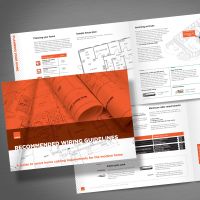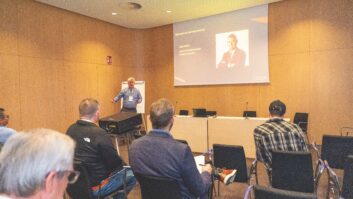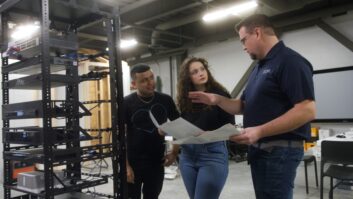
CEDIA has released its Recommended Wiring Guidelines document to make architects aware of the cabling infrastructure necessary to support the technology typically required for the modern home. CEDIA (the Custom Electronic Design & Installation Association) has released its Recommended Wiring Guidelines document to make architects aware of the cabling infrastructure necessary to support the technology typically required for the modern home. This new publication provides a useful and practical step-by-step guide. It identifies the key requirements for an installation and defines three grades of recommended cabling infrastructure. Grade 1 will ensure the effective and reliable delivery of internet services, home networking, TV, satellite, radio, telephone, conferencing and other entertainment services to most rooms in the house. A Grade 2 infrastructure will additionally provide the capability for whole-home distribution of audio-visual content using discrete in-ceiling speakers and in-wall control points. With a Grade 3 infrastructure, functionality is further extended to embrace lighting control, motorised curtains and blinds, access control systems, CCTV networks, environmental and heating control, as well as systems that allow these technologies to be controlled and integrated by a single control system using in-wall controls and hand-held remote devices. Through a clearly defined staged process and using explanatory diagrams, the document outlines the incoming services and the planning, cabling and testing essentials which should be followed for each Grade. Once installed, a qualified CEDIA Structured Cabling Assessor can be called in to provide independent verification and testing of the cabling infrastructure to ensure it is fit for purpose.
“This document provides the essential guidance that’s needed on wiring to support today’s digital and connected lifestyles,” says Matt Dodd, CEDIA education chair. “We would always recommend that a CEDIA specialist is involved as soon as possible in a project life-cycle to advise and design the cabling infrastructure. Where that’s not possible, for whatever reason, then these guidelines provide Best Practice advice to other trades, specifically electricians and builders. They will also help architects make the right choices at an early design stage, with independent verification available from a CEDIA Structured Cabling Assessor.”
He warns: “The most expensive cable that can be installed is the one that did not get fitted in the first place. Mistakes can be costly so it is vital to get the cabling infrastructure correct the first time around.”
www.cediaeducation.com/resources/whitepapers







